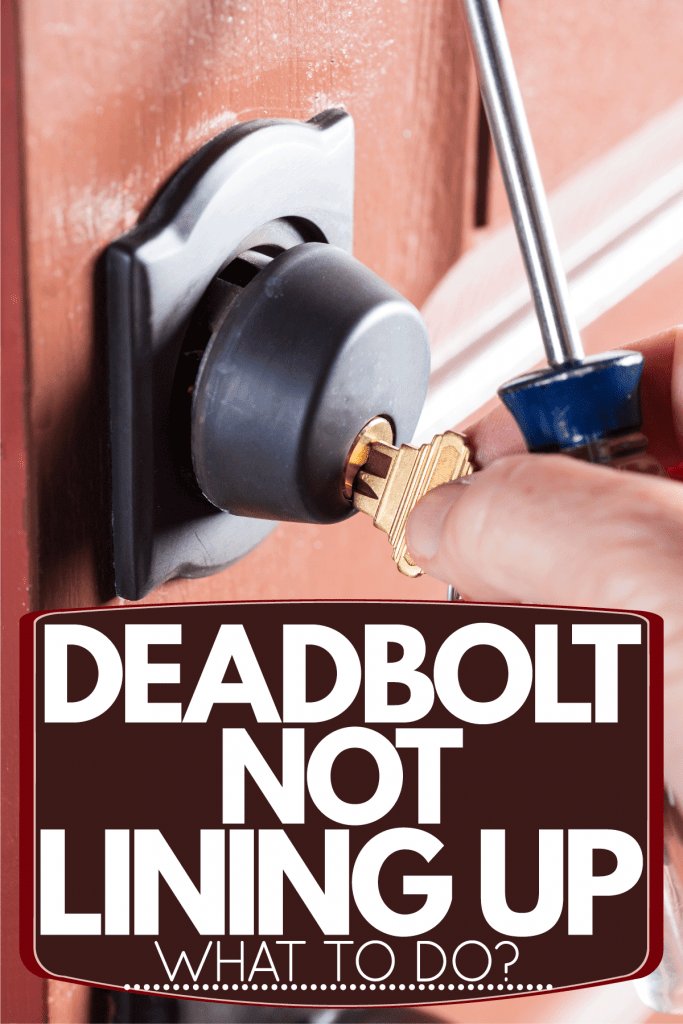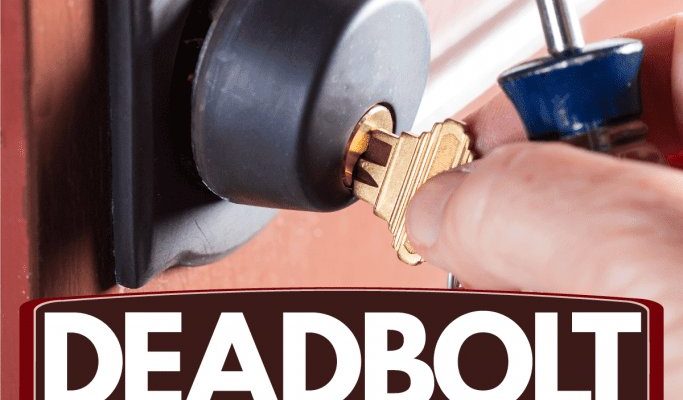
Here’s the thing: a misaligned deadbolt isn’t just an annoyance. It’s a security risk. If the lock won’t fully engage, you’re left with a door that isn’t really locked. Most folks with Kwikset, Schlage, or Yale deadbolts on wooden doors run into this, especially during wet seasons or in homes without much climate control. Before you call a locksmith or think about replacing the whole lock, there are a few steps you can take to troubleshoot—and maybe fix—the issue yourself.
Why Deadbolts Get Misaligned When Doors Swell
The core of the problem is simple: wood expands when it absorbs moisture. If you live somewhere with hot, humid summers or wild temperature swings, your door’s going to move. This movement is rarely dramatic, but even a millimeter of swelling can push your door out of alignment with the deadbolt’s strike plate. Suddenly, the bolt can’t slide into its pocket, and locking up becomes a battle.
You might notice the deadbolt feels tight, or you have to lean your whole body into the door to get it to lock. Sometimes, the key won’t even turn all the way. It’s not that the lock’s broken, but rather the parts no longer line up. Seasonal changes, rainstorms, or running the air conditioner less often can all trigger these little shifts.
For most folks, a misaligned deadbolt is just a minor headache—but left unsolved, it can damage the lock, wear out the key, or leave your home unsecured.
Certain brands like Kwikset and Schlage use different types of deadbolt mechanisms, but almost any mechanical deadbolt can be affected by door swelling. Understanding what’s going on is the first step to fixing it—so you know it’s not the lock’s fault, it’s physics.
How to Spot the Signs of a Misaligned Deadbolt
Before grabbing a screwdriver, let’s make sure swelling is the actual culprit. Here are the classic red flags you’ll notice if your deadbolt and strike plate aren’t lining up:
- Deadbolt won’t fully extend or retract: You turn the key or the thumb turn, but the bolt gets stuck partway.
- Key is hard to turn: The lock “fights” you, or the key feels like it’s about to snap.
- You have to push or pull the door: Locking up now requires extra muscle or jiggling the door.
- Visible marks around the strike plate: Fresh scratches or rubbing where the deadbolt’s missing its target.
It’s smart to check during both dry and humid weather. Sometimes, the problem comes and goes depending on how swollen the door is. Brands like Yale or Schlage might have slightly different tolerances, but the symptoms (and fixes) are usually the same. If your deadbolt works perfectly with the door open, but jams with it closed, that’s a sure sign the problem is alignment—not a faulty lock.
Quick Fixes You Can Try Right Away
Sometimes a little troubleshooting is all you need to get things working again—no special code, reset, or remote required. Here are a few things to try before calling in a pro:
- Lubricate the lock and bolt: Grab a graphite lock lubricant and give the keyhole, bolt, and strike plate a quick spray. This reduces friction and sometimes lets a stuck lock move freely.
- Tighten the screws: If your door or strike plate screws have loosened, things can slip out of place. Check and snug up all visible screws on the lock, strike plate, and hinges.
- Pocket test: With the door open, turn your deadbolt in and out. If it works fine this way, but not when closed, swelling/pressure is definitely the issue.
Honestly, you’d be surprised how often a simple lube job or tightening a wobbly hinge solves the problem completely. If things are still out of sync, it’s time to look at some hands-on fixes.
Adjusting the Strike Plate for Better Alignment
If your deadbolt is just a hair off target, moving the strike plate on the door frame can often fix things. Here’s how to get started:
Marking the Right Spot
Open the door and extend the deadbolt so it pokes out. Use a pencil to mark exactly where it lines up with the frame. Sometimes, you’ll see it’s only off by a couple of millimeters—that tiny gap is what’s jamming the lock.
Shifting the Strike Plate
Use a screwdriver to remove the screws holding the strike plate. If you’re lucky, you can just nudge it up, down, or sideways to match where the deadbolt hits now. For bigger adjustments, you may need to carve out a little wood in the frame with a chisel or utility knife. Go slowly—a little makes a big difference.
Test and Tweak
Reattach the plate and test the lock several times. It should now sync up and let you lock and unlock smoothly, without forcing the door or risking snapping a key. If it’s still not perfect, try another tiny adjustment.
Honestly, this fix handles 80% of misaligned deadbolt headaches, especially when humidity or door swelling is to blame.
Shaving or Sanding the Door Edge
Sometimes the swelling is too much for just a plate adjustment. If your door is now rubbing against the frame or you can see it’s gotten wider, you may need to shave off a sliver. Here’s how to do it safely:
Where to Sand
Look at the edge closest to the lock. If you see shiny spots or feel resistance when opening/closing, that’s where swelling has made the door too fat for its frame.
How to Sand
Use medium-grit sandpaper or a sanding block to gently smooth down the swollen edge. For bigger jobs, a hand planer works too, but go slow and check often so you don’t remove too much wood.
Finishing Up
Once the door swings and locks easily, use fine-grit sandpaper to smooth things out, and touch up the paint or sealant. Exposed wood can soak up even more moisture if left raw, so sealing is important.
This fix takes a little more elbow grease and patience, but it can reset your door’s shape and keep things working even in humid weather.
Preventing Deadbolt Problems in the Future
After you’ve fixed a misaligned deadbolt once, you’ll want to keep it from happening again. There are a few smart steps to keep your door, frame, and lock in sync—even as seasons change.
- Paint or seal all edges of the door: Unsealed wood is like a sponge. By sealing every edge (not just the front and back), you block out a lot of moisture.
- Keep door hardware tight: Screws in your hinges, lock, and strike plate loosen over time. Give them a quarterly checkup.
- Control indoor humidity: If you live in a climate with wild swings, a dehumidifier can save your wood doors—and your sanity.
- Keep the lock and hinges lubricated: Regular graphite or silicone spray keeps things moving smoothly and reduces wear.
Think of it as a tiny maintenance routine—like changing batteries in a smoke detector. A little prevention goes a long way toward keeping your home secure and running smoothly.
When to Call a Pro (and What to Expect)
There are times when troubleshooting only goes so far. If you’ve tried adjusting, sanding, and lubricating, but your deadbolt still won’t sync up, it might be time for a locksmith.
Here’s what pros can do:
- Re-mortise the strike plate: If the existing pocket for the deadbolt is too tight or off-center, a locksmith can clean it up with pro tools.
- Install an adjustable strike plate: Some brands make strike plates designed for shifting doors—these have a wider opening and more wiggle room.
- Check the lock cylinder and mechanism: Sometimes the deadbolt itself is worn out from years of fighting a swollen frame. A pro can spot hidden issues quickly.
Don’t feel bad if you end up at this step. Wood doors are fickle, and every house shifts a little differently. In rare cases, persistent swelling may even mean replacing the door with a more weather-resistant material.
Alternate Options: Smart Locks, Keyless Entry, and More
If you’re tired of the seasonal lock struggle, there are a few modern alternatives worth considering:
- Smart locks: Brands like August, Schlage Encode, and Yale offer keyless deadbolts that can sometimes adjust for small misalignments automatically. You’ll just need to pair, sync, and reset the smart components if needed.
- Deadbolts with oversized strike plates: Some universal lock kits come with extra-large plates that give more “wiggle room” for swollen doors.
- Switch to metal or composite doors: If you’re replacing a very old, warping wooden door, a more stable material resists swelling from moisture and heat.
Of course, every option has trade-offs—smart locks need new batteries and sometimes a Wi-Fi code or remote to reset and pair. But for homes where alignment is a constant headache, these upgrades can bring real peace of mind.
Wrapping Up: Keeping Your Deadbolt and Door in Sync
A misaligned deadbolt after door swelling can be a real hassle, but it’s almost always fixable. Whether you’re dealing with a classic Schlage, a basic Kwikset, or even an older Yale lock, the goal is to get everything lined back up—so locking up isn’t a daily struggle. With a patient approach and a few basic tools, you can sync your door and deadbolt so they work together, season after season.
Don’t let humidity or a stubborn wood door leave your home unsecured. Take it one step at a time—start by double-checking alignment, try a simple strike plate shift, and don’t be afraid to sand if you need to. If you ever feel stuck, calling a pro or looking into smart lock alternatives is always a smart move. In the end, every well-aligned deadbolt is one less headache—and one more thing you don’t have to think about, rain or shine.
